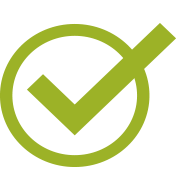Catalog Description
Also known as AAD 75
Advisory: Completion of AAD 70 with grade of "C" or better
Hours: 72 (36 lecture, 36 activity)
Description: Introduction to the acquisition and computer enhancements of digital images for design and photography. Analysis and critique of images from initial concept to final project creation. Basic scanning, image adjustments, retouching, compositing, and file preparation for printing and other uses. (CSU, UC)
Course Student Learning Outcomes
- CSLO #1: Analyze and select various digital input methods and software enhancements for accurate digital reproduction and creative visual effect.
- CSLO #2: Distinguish between various file formats, vector vs. raster files, and apply digital tools using non-destructive techniques.
- CSLO #3: Investigate historical and contemporary influences, as well as ethical and legal issues regarding electronic imaging.
- CSLO #4: Create images that demonstrate a mastery of digital enhancement techniques including proper tone and color, retouching, image montage, and file preparation for various types of output.
Effective Term
Fall 2025
Course Type
Credit - Degree-applicable
Contact Hours
72
Outside of Class Hours
90
Total Student Learning Hours
162
Course Objectives
Lecture Objectives:
1. Define electronic imaging terminology;
2. Explain the elements, principles and function of design in visual images;
3. Create thumbnail sketches of planned designs;
4. Relate the advantages, disadvantages and appropriate use for bitmap and vector functions;
5. Navigate the application and computer desktop with location and zoom tools;
6. Utilize a variety of selection tools and methods as appropriate for image and subject types to select, transform, save and load selections;
7. Recognize layers, masks, and color and alpha channels;
8. Analyze color renditions and apply appropriate color correction methods to digital images;
9. Apply various filters to digital images for enhanced expression and communication;
10. Demonstrate vector tool use with paths and shapes on digital images;
11. Demonstrate file preparation for intended function;
12. Identify ethical and legal issues of electronic imaging;
13. Examine and critique aesthetic and technical elements of digital images and portfolios.
Activity Objectives:
14. Apply basic file handling skills (opening, naming, sizing, cropping, rotating, saving, etc.) to images;
15. Scan prints and objects with use-appropriate resolution, size, naming, format;
16. Create images with layers using adjustment layers, layer masks, changes in opacity and Blend modes;
17. Create digital montage images utilizing multiple source images;
18. Create original art through digital painting techniques;
19. Employ retouching and correction tools to restore photographs;
20. Create visual designs using type as an element considering art principles and design communication; and
21. Create portfolio of images for presentation.
General Education Information
- Approved College Associate Degree GE Applicability
- CSU GE Applicability (Recommended-requires CSU approval)
- Cal-GETC Applicability (Recommended - Requires External Approval)
- IGETC Applicability (Recommended-requires CSU/UC approval)
Articulation Information
- CSU Transferable
- UC Transferable
Methods of Evaluation
- Objective Examinations
- Example: An objective exam will be utilized to evaluate students' understanding of copyright law and ethical issues related to digital image manipulation. Standard grading would be utilized.
- Projects
- Example: Students will create a portfolio of images that work together stylistically as a series of images. The final must contain multiple source images, text elements, and the use of Vector and Raster objects. The submitted files will be evaluated based on the use of non-destructive techniques such as use of Retouching layers, Adjustment Layers and Smart Objects as well as design and visual impact.
- Skill Demonstrations
- Example: Student will be assigned to create a high-resolution file that utilizes non-destructive techniques, and is then properly sized for multiple uses.
Repeatable
No
Methods of Instruction
- Activity
- Lecture/Discussion
- Distance Learning
Activity:
- Instructor will demonstrate how to create selections and assign the chapter on selection methods to support the lecture content. Instructor will then give out an assignment that involves selecting out a variety of objects from different backgrounds. The instructor will work with students one-on-one and in small groups to help students refine their selecting skills. Instructor will evaluate the assignment given for the quality of selections and provide feedback on how to improve their ability to select objects.
Lecture:
- Instructor will lecture on how to utilize the scanner to import both flat art and objects as source files for collage or montage images. Instructor will then demonstrate the use of the scanner and the appropriate settings for the scanner interface. A handout will then be distributed to students on the scanner interface for reference when students are scanning. Instructor will then supervise and answer student questions while they are scanning during lab time.
Distance Learning
- Instructor will assign students to read an instructor prepared module in LMS that addresses Layer Masking. The instructor will include a video demonstration, written instructions. The students will then perform an exercise to make Layer Masks using instructor provided files.
Typical Out of Class Assignments
Reading Assignments
1. Read the chapter on file formats and utilize the information to produce three variations of the current assignment. A file in the appropriate format for the web, for a print ad and in a layered format allowing for further manipulation at a later time. 2. Read the two handouts on falsifying photographs. Come to class prepared to discuss when falsified photographs are accepted in society.
Writing, Problem Solving or Performance
1. Find five examples illustrating the use of Photoshop. Submit these with a written analysis including elements and principles of art, Photoshop techniques used and an assessment of the effectiveness of the technique. 2. Write a self-evaluation of your progress this semester which specifically refers to all projects and portfolio. Also include future plans with digital imaging. Submit with portfolio.
Other (Term projects, research papers, portfolios, etc.)
1. Create a portfolio of all design projects as a screen presentation with title slide. Include scans of thumbnail sketches, source images and the final image to demonstrate the progression from concept to finished piece.
Required Materials
- The Adobe Photoshop Book for Digital Photographers
- Author: Kelby
- Publisher: New Riders Press
- Publication Date: 2023
- Text Edition: 2nd
- Classic Textbook?:
- OER Link:
- OER:
- Adobe Photoshop Classroom in a Book
- Author: Conrad Chavez
- Publisher: Adobe Press
- Publication Date: 2024
- Text Edition: 1st
- Classic Textbook?:
- OER Link:
- OER:


